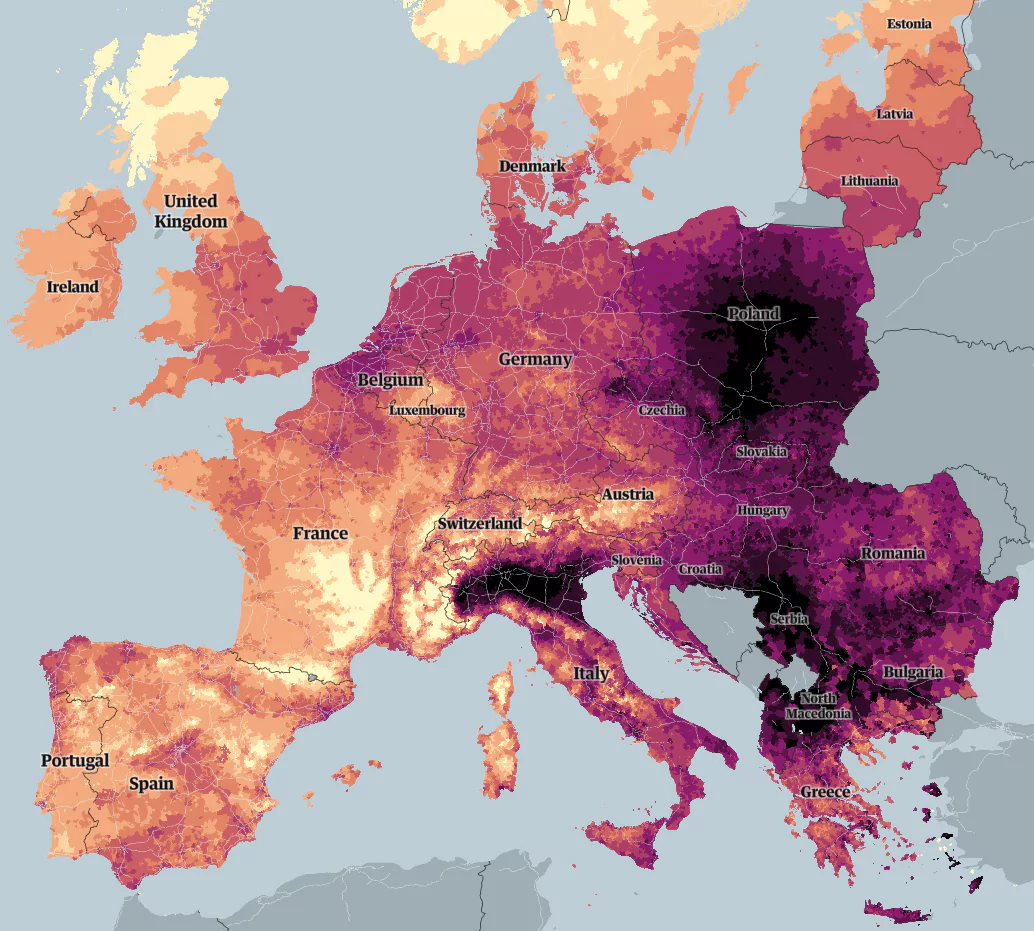Almost every single person living in Europe, home to nearly 750 million people, is breathing in dangerously polluted air according to a new study, and it could spell disaster for our health.
An investigation led by The Guardian has revealed harrowing figures on air pollution across Europe.
Already blamed for some 400,000 deaths each year in Europe, the newspaper and the team of scientists it commissioned for the study say the new findings point to a looming and severe “public health crisis” in the near future, with “almost everyone across the continent living in areas with dangerous levels of air pollution”.
The study called on cutting-edge methodologies to gather data via satellite images and more than 1,400 ground monitoring stations, and ultimately produce an in-depth and interactive map listing the micrograms of PM2.5 per cubic metre in cities, towns and villages from Portugal in the southwest to the Greek islands in the southeast, and Iceland and Ireland in the northwest to Finland in the northeast.
The result is shocking, with virtually every part of Europe awash in levels exceeding World Health Organisation (WHO) guidelines for these “most dangerous airborne particulates”.
According to the investigation, almost two-thirds of the European population live in areas where PM2.5 air pollution, which is primarily produced through the burning of fossil fuels, is more than double the WHO guidelines of five micrograms per cubic metre. Just 2% of the population is believed to live in areas within this “safe” limit.
Chilling results across Europe
PM2.5 pollution is particularly bad in Eastern Europe. The nation of North Macedonia returned the highest levels of air pollution, with almost four times the safe levels recorded in two-thirds of the country, while other states showing areas of serious concern include Serbia and Poland.
A black spot also hovers above northern Italy, from Turin to Venice and Ravenna, with levels exceeding 19 micrograms – the top of the available scale – of PM2.5 per cubic metre in some areas.

In France, 37% of the population resides in zones with double the WHO guidance levels. This rises to almost 50% in Spain and three-quarters in Germany. In the UK, three in four people live in an area where PM2.5 pollution is between one and two times the WHO safety levels.
Locally, levels in Nice came back as between 12 and 14 micrograms of PM2.5 per cubic metre, and between 10 and 12 for the rest of the Côte d’Azur, including the municipalities surrounding Monaco. Air quality improves the further you travel back from the coast, dipping to between 8.5 and 10 in Grasse, for example, while the more rural and higher altitude communes in the Alpes-Maritimes routinely return safe levels.
The detailed map can be found here.
What is being done?
Last week, the European Parliament voted to adopt a strict law on PM2.5 in line with WHO recommendations. The law must still pass through the European Council, but it could instigate legally binding limits on PM2.5 concentrations of five micrograms per cubic metre down from 25 by 2035.
Make sure you’re never left out of the conversation.
Sign up for the Monaco Life newsletter, and follow us on Facebook, Twitter, Instagram and LinkedIn.
Photo source: V2F Air, Unsplash
